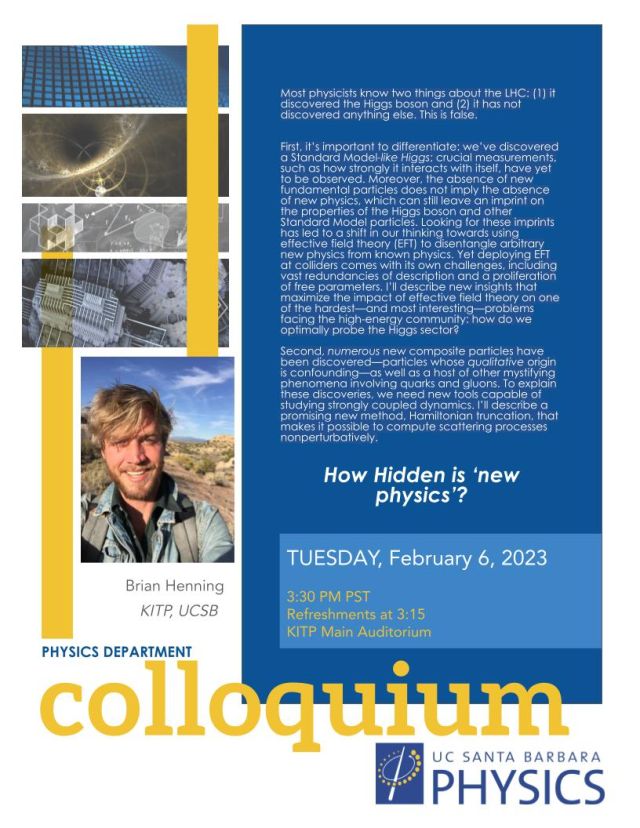How hidden is ‘new physics’?

Abstract: Most physicists know two things about the LHC: (1) it discovered the Higgs boson and (2) it has not discovered anything else. This is false.
First, it’s important to differentiate: we’ve discovered a Standard Model-like Higgs; crucial measurements, such as how strongly it interacts with itself, have yet to be observed. Moreover, the absence of new fundamental particles does not imply the absence of new physics, which can still leave an imprint on the properties of the Higgs boson and other Standard Model particles. Looking for these imprints has led to a shift in our thinking towards using effective field theory (EFT) to disentangle arbitrary new physics from known physics. Yet deploying EFT at colliders comes with its own challenges, including vast redundancies of description and a proliferation of free parameters. I’ll describe new insights that maximize the impact of effective field theory on one of the hardest—and most interesting—problems facing the high-energy community: how do we optimally probe the Higgs sector?
Second, numerous new composite particles have been discovered—particles whose qualitative origin is confounding—as well as a host of other mystifying phenomena involving quarks and gluons. To explain these discoveries, we need new tools capable of studying strongly coupled dynamics. I’ll describe a promising new method, Hamiltonian truncation, that makes it possible to compute scattering processes nonperturbatively.